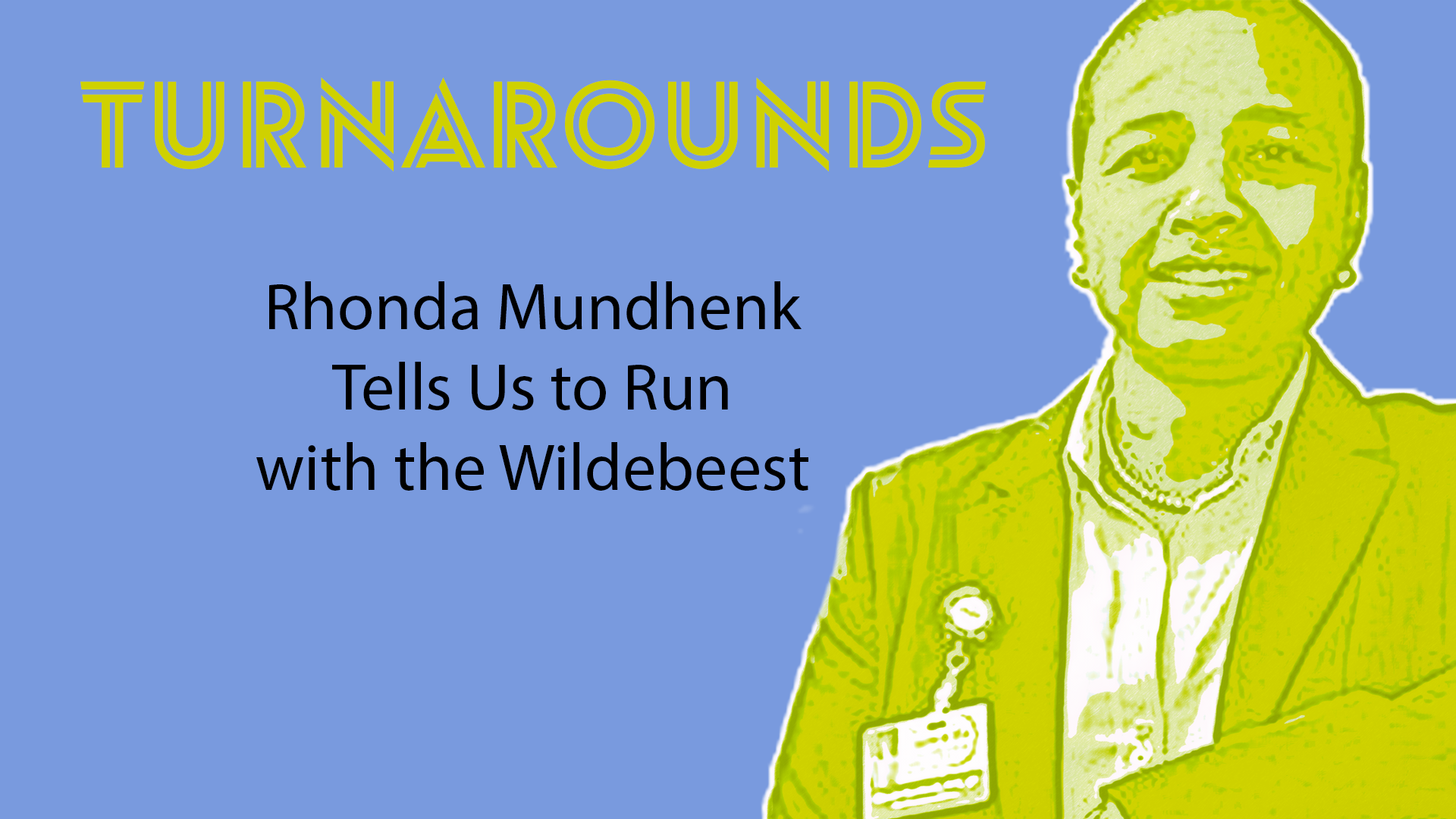Turnarounds often produce managerial migraines, but done correctly, they can be transformative. We talk to a true turnaround savant to gather her wisdom.
Show Notes
Managers are often decent at waging bets, but what if you had to take over a losing hand? Management is hard on a good day, but leading an organizational turnaround takes special skills and a willingness to persist in the face of imposing obstacles. How do you condition yourself to lead an organization when the odds are stacked against you? That’s what we cover on this episode of Management Muse.
In this episode, we discuss Organizational Turnarounds with Rhonda Mundhenk. Rhonda is the Chief Executive Officer at Clinical Health Network for Transformation (CHN), and former Chief Executive Officer at Lone Star Circle of Care Under her leadership, Lone Star survived a multimillion dollar financial restructuring to become one of the nation’s leading federally qualified health centers. She’s got major turnaround skills. Tune in to get the scoop.
Timestamps:
[00:01:01] Rhonda Mundhenk’s background
[00:01:35] Tenacity is a common characteristic of many managers; however, turnarounds require an especially invested leader. Rhonda shares why this matters.
[00:02:59] Rhonda explains a 3-step process for turnarounds. 1) Preserving the core of the organization, 2) Redefining the organization, 3) Recasting the organization
[00:08:28] Restructuring relies heavily on committing to a new vision and endlessly communicating the vision to everyone involved. Here, we discuss how that’s best done.
[00:12:41] Here, we talk about the traits necessary when turnaround work gets especially hard.
[00:16:12] Rhonda talks about the importance of your team, and accessing resources outside of your organization.
[00:16:55] Not every job survives a turnaround. Here’s how to keep your sanity during this tough phase.
[00:19:15] Rhonda reflects here on her top turnaround lessons learned
[00:24:55] Here is what the pandemic taught us all about navigating uncertainty, which is a common trait of turnarounds.
[00:29:02] Rhonda advises on how to influence change when you’re not the CEO by: identifying your audience, communicating your why, overcoming inertia by appealing to emotions
[00:37:40] Rhonda discusses looking back and seeing your good work continue.
[00:43:10] What wildebeest migration and organizational restructuring have in common—the answer may surprise you.
Quotes by Rhonda Mundhenk:
“When you’re in the moment, it just seems all consuming and there’s so many things to do, but you also have to provide a vision for the future that’s actually going to get people through [to] the other side.“
“One of the central tenants of some of the schools of community organizing is that you never lead your people down a path that is unfamiliar. So, you have to take some of that old identity. Take the good [of] what that old identity was, or that core. You preserve that, and then you redefine and you recast for what the future is and for what the future holds.”
“People like to be on winning teams, and when your team is losing, none of it feels good. You have to find a way to counteract that. So, you have to say there’s a way. Better or at a higher level than we were performing previously. We’re going to take this opportunity to do just that.”
“Taking a very complicated problem and being able to lead people through it in a very simple way.
The problem itself is very complex. The going through it itself is very complex. But how you translate that experience to the people who are working with [is that] it has to be simple. And that is one of the things I think that I’ve that I’ve carried with me from that experience.”
“A lot of people hear the word ‘turnaround’ and get nervous because there’s this implicit, underlying belief that, well, that means I have to fire a lot of people, and so now we’re actually talking point-blank about that.”
“In my instance, I think in the worst part [is that] there is sort of a numbness you experience just because it’s all so awful. At a certain point in time, you can’t feel it necessarily as acutely as you did. Maybe because it’s such a long slog that to get through. You actually do shut down so that you can just say ‘You know, I’m getting up today. And putting on the armor, I’m going to work. We’ll see what dragons are there. When I get there and then we’ll have to kill those dragons. And then we’ll repeat tomorrow. Then we’ll keep doing that until there are no more dragons’.”
“You have to be able to understand your audience, understand what actually needs to happen, and then just write it to your audience in a way that [has] the emotional component. It’s very rarely actually the rational things that make people change big, deep seated, you know, deeply felt beliefs.”
“You just have to have that understanding that like, yes, this is the whole herd that I am responsible for, but I do understand that not the entire herd is going to make it to where we’re going, because that is not the nature of migrations. So, there will be some attrition along the way. But your goal is to get that
critical mass of wildebeest to jump in the water. Because actually when they all jump in the water, very few of them are gonna be eaten by crocodiles.”
Resources:
McKinley, William, Scott Latham, and Michael Braun. “Organizational decline and innovation: Turnarounds and downward spirals.” Academy of management review 39.1 (2014): 88-110.
Useem, Michael. Leading Up. New York: Currency, 2001.
https://culsure.com/product/organizational-benchmark/
https://ondemandleadership.com/strategic-planning/


